Abstract
A retrospective survey of 300 surgical treatments for colic involving 341 interventions was carried out to determine mortality rates and associated factors. These horses had been referred to the Ontario Veterinary College over the period September 1974 to February 1980. Data from the case records was collected and stored on a computer and statistical analysis was carried out using X2 tests.
Fifty percent (150/300) of the horses survived to be discharged from the hospital. Fifty-two horses were euthanized during the operation and another ten horses should have been; if these cases are excluded the overall survival rate is 64.7% (150/232). A wide range of breeds were involved but the breed did not significantly affect survival. There was a significantly greater occurrence of serious colic in the two week to two month and one to two year age groups and significantly less in the two to four year age groups when compared with the total number of horses admitted over the same period. There was an even distribution of male and female horses but males showed a significantly lower mortality rate (57% of the males survived compared with 43% of the females). The size of the animal did not affect survival significantly. There was no seasonal variation when compared with the total number of equine patients.
Survival was significantly influenced by the lesion, the preoperative packed cell volume and total plasma protein and by the length of the surgical procedure.
Full text
PDF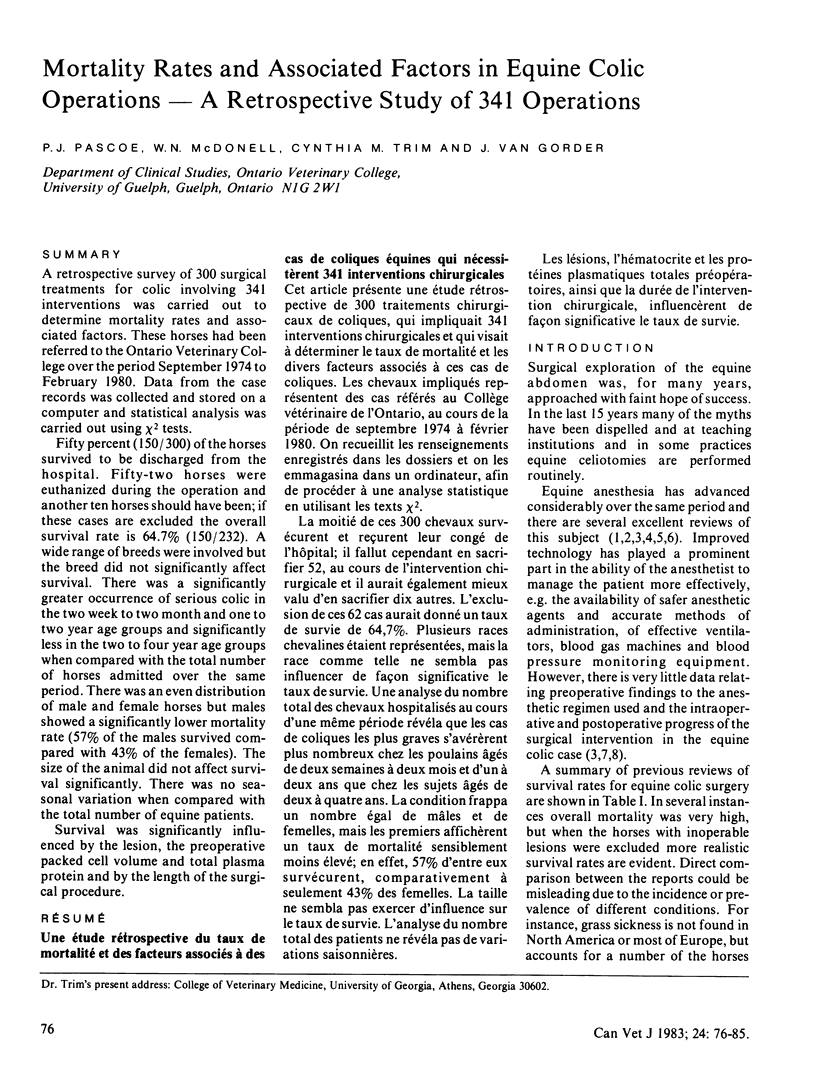
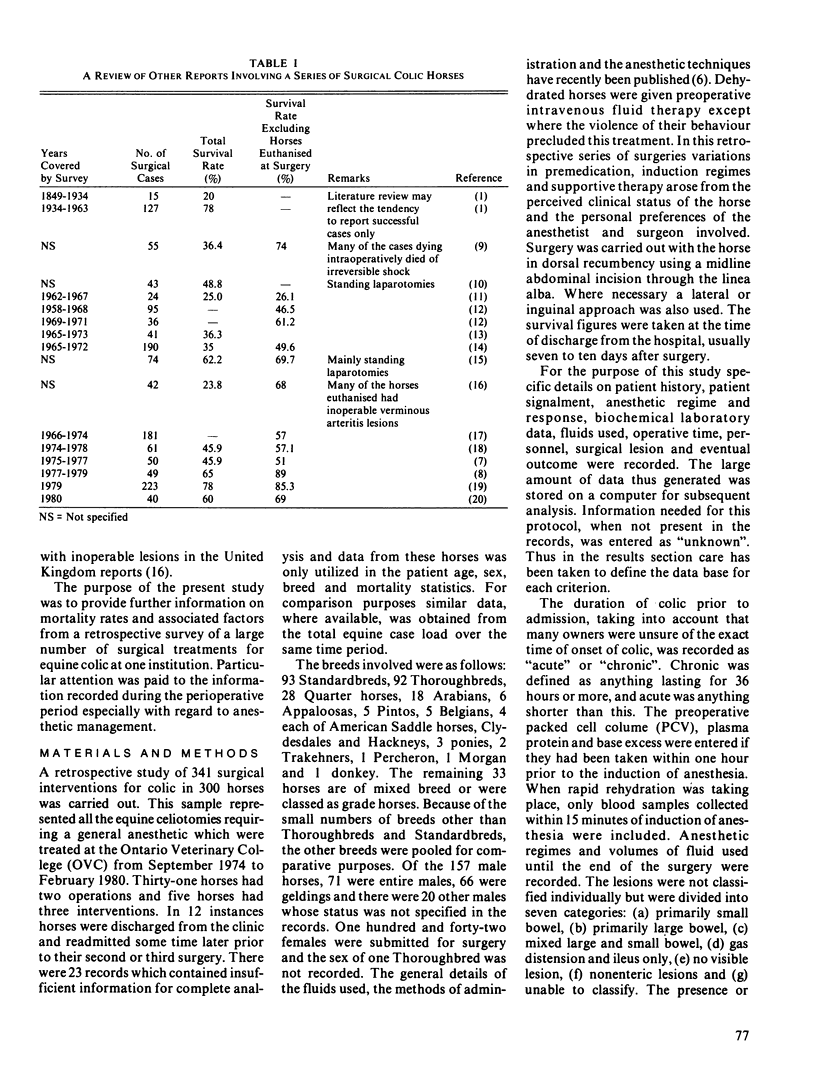

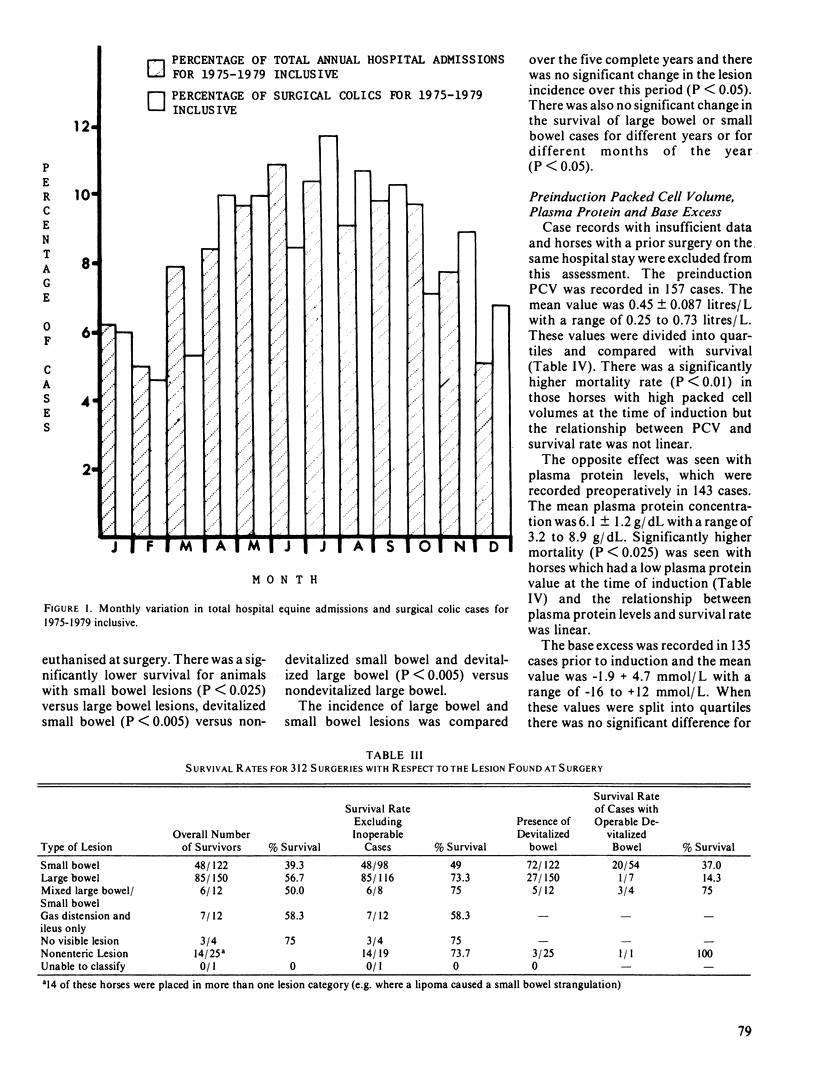
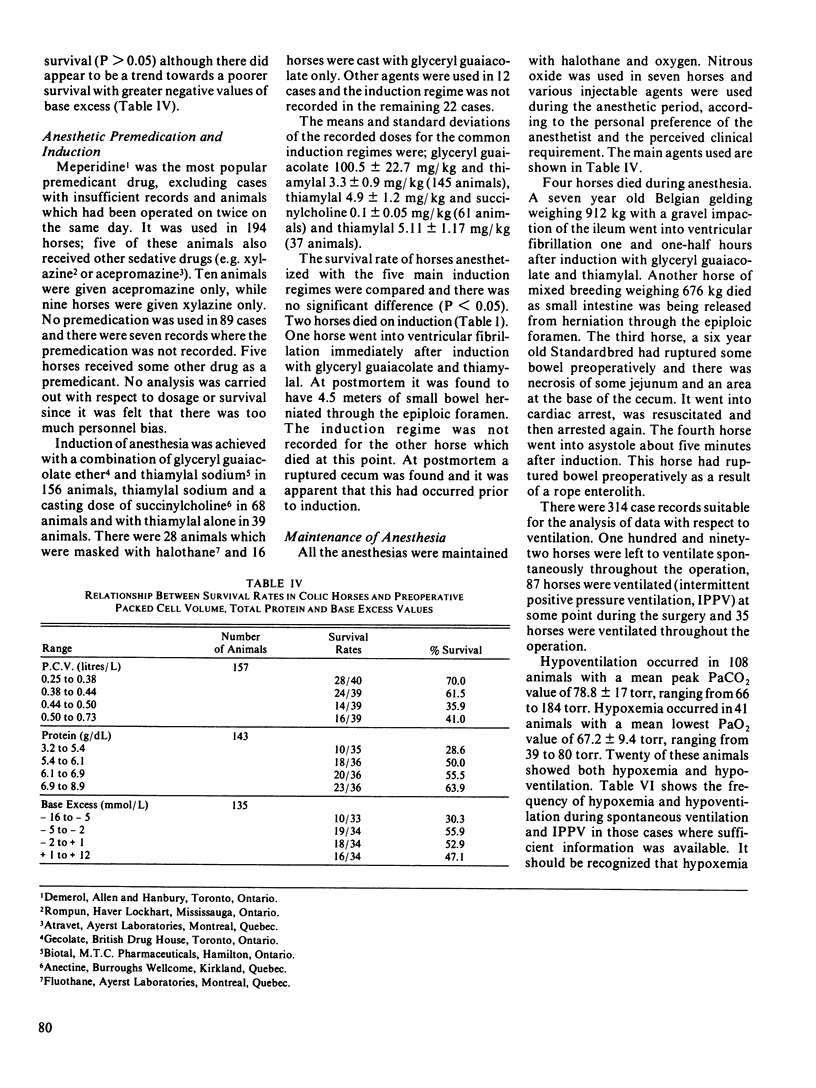
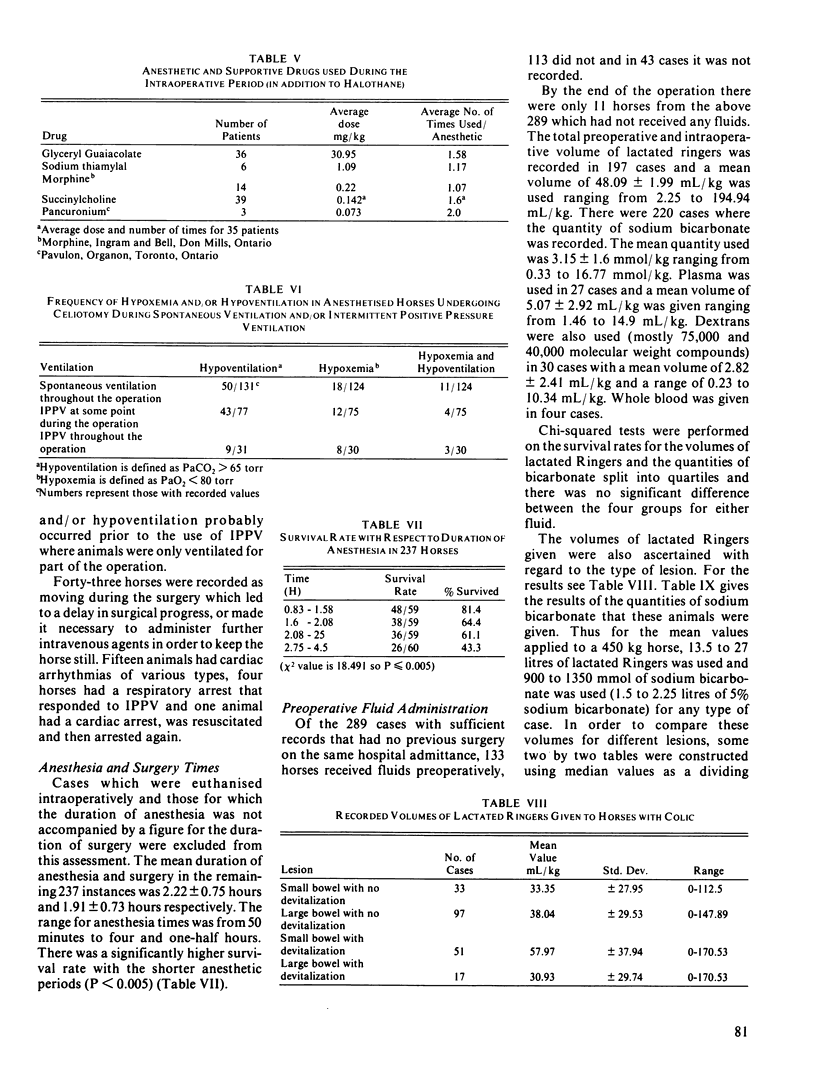
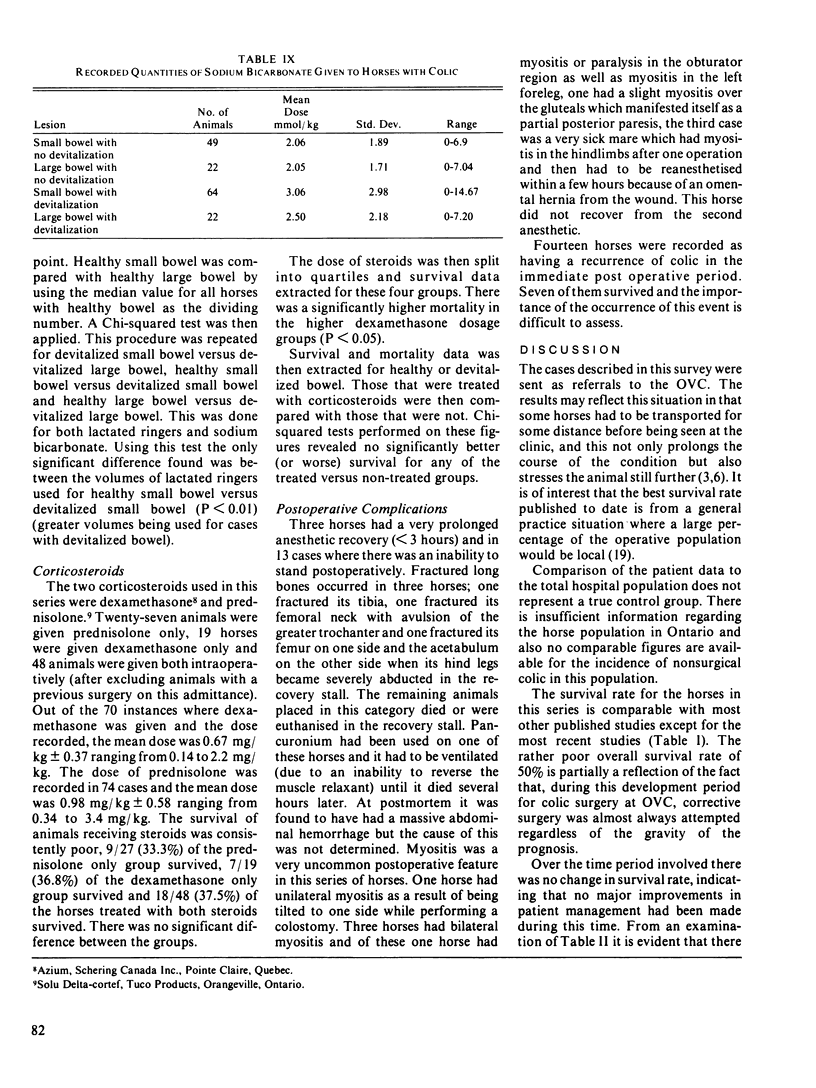
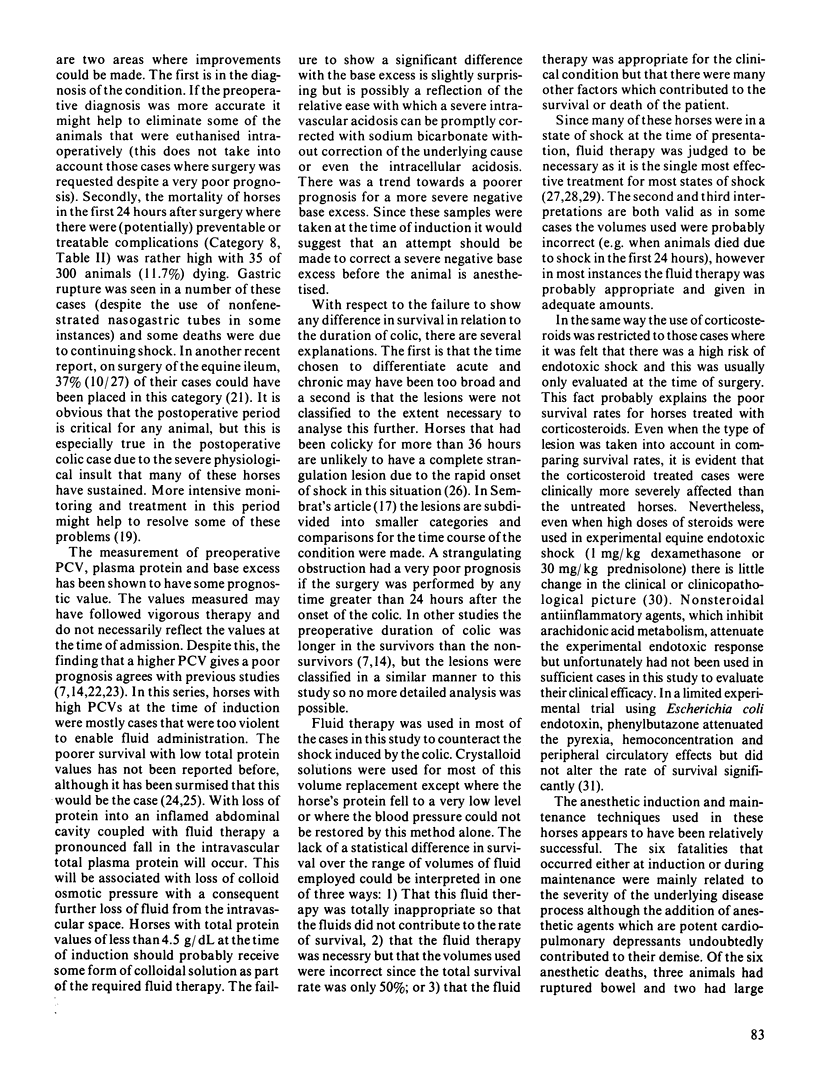
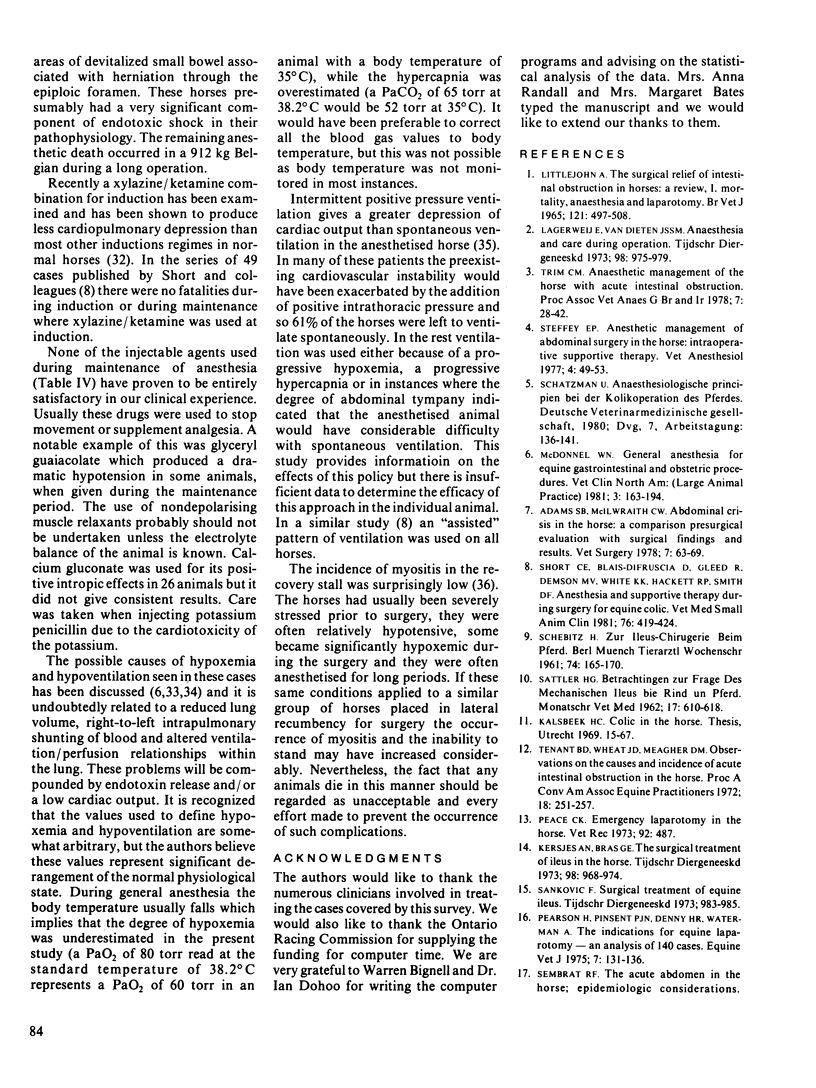
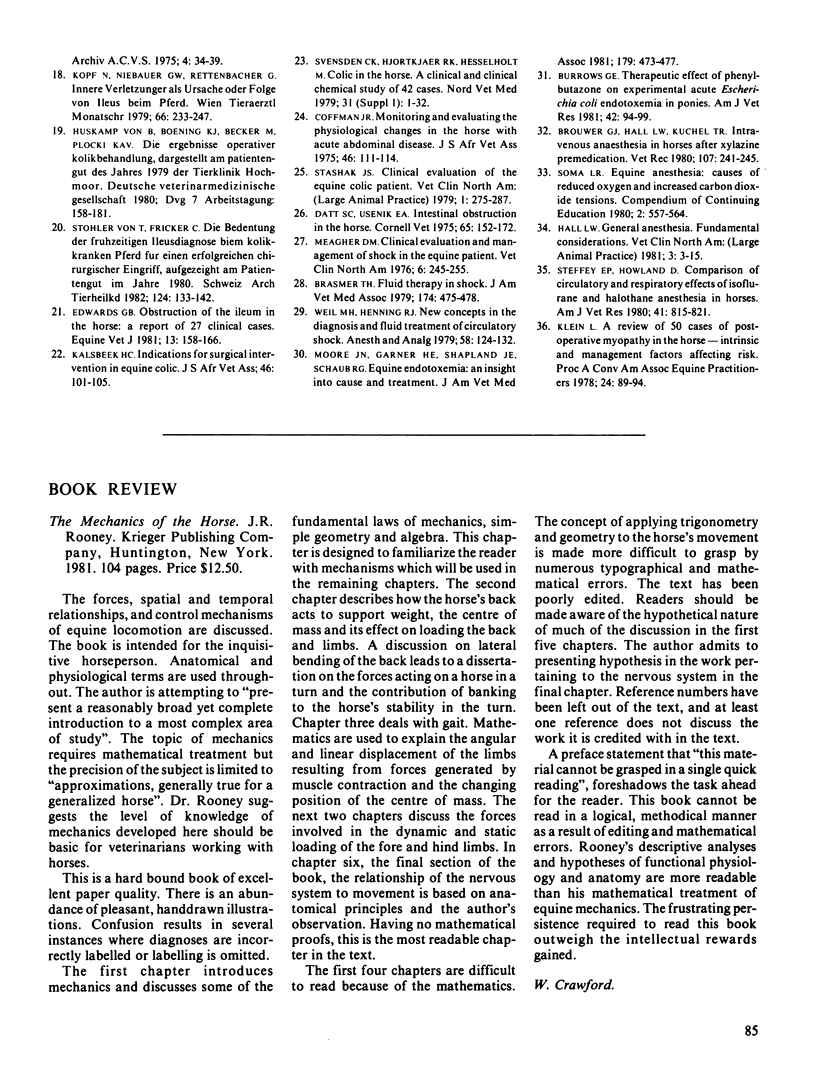
Selected References
These references are in PubMed. This may not be the complete list of references from this article.
- Brasmer T. H. Fluid therapy in shock. J Am Vet Med Assoc. 1979 Mar 1;174(5):475–478. [PubMed] [Google Scholar]
- Brouwer G. J., Hall L. W., Kuchel T. R. Intravenous anaesthesia in horses after xylazine premedication. Vet Rec. 1980 Sep 13;107(11):241–245. doi: 10.1136/vr.107.11.241. [DOI] [PubMed] [Google Scholar]
- Burrows G. E. Therapeutic effect of phenylbutazone on experimental acute Escherichia coli endotoxemia in ponies. Am J Vet Res. 1981 Jan;42(1):94–99. [PubMed] [Google Scholar]
- Coffman J. R. Monitoring and evaluating the physiological changes in the horse with acute abdominal disease. J S Afr Vet Assoc. 1975 Mar;46(1):111–114. [PubMed] [Google Scholar]
- Datt S. C., Usenik E. A. Intestinal obstruction in the horse. Physical signs and blood chemistry. Cornell Vet. 1975 Apr;65(2):152–172. [PubMed] [Google Scholar]
- Edwards G. B. Obstruction of the ileum in the horse: a report of 27 clinical cases. Equine Vet J. 1981 Jul;13(3):158–166. doi: 10.1111/j.2042-3306.1981.tb03474.x. [DOI] [PubMed] [Google Scholar]
- Hall L. W. General anesthesia: fundamental considerations. Vet Clin North Am Large Anim Pract. 1981 May;3(1):3–15. doi: 10.1016/s0196-9846(17)30143-x. [DOI] [PubMed] [Google Scholar]
- Kersjes A. W., Bras G. E. The surgical treatment of ileus in the horse. Tijdschr Diergeneeskd. 1973 Oct 15;98(20):968–974. [PubMed] [Google Scholar]
- Lagerweij E., van Dieten J. S. Anaesthesia and care during operation. Tijdschr Diergeneeskd. 1973 Oct 15;98(20):975–979. [PubMed] [Google Scholar]
- Littlejohn A. The surgical relief of intestinal obstruction in horses: a review. I. Mortality, anaesthesia and laparotomy. Br Vet J. 1965 Nov;121(11):497–508. doi: 10.1016/s0007-1935(17)40902-x. [DOI] [PubMed] [Google Scholar]
- McDonell W. N. General anesthesia for equine gastrointestinal and obstetric procedures. Vet Clin North Am Large Anim Pract. 1981 May;3(1):163–194. doi: 10.1016/s0196-9846(17)30151-9. [DOI] [PubMed] [Google Scholar]
- Meagher D. M. Clinical evaluation and management of shock in the equine patient. Vet Clin North Am. 1976 May;6(2):245–255. doi: 10.1016/s0091-0279(76)50032-3. [DOI] [PubMed] [Google Scholar]
- Moore J. N., Garner H. E., Shapland J. E., Schaub R. G. Equine endotoxemia: an insight into cause and treatment. J Am Vet Med Assoc. 1981 Sep 1;179(5):473–477. [PubMed] [Google Scholar]
- Peace C. K. Emergency laparotomy in the horse. Vet Rec. 1973 May 5;92(18):487–488. doi: 10.1136/vr.92.18.487. [DOI] [PubMed] [Google Scholar]
- Pearson H., Pinsent P. J., Denny H. R., Waterman A. The indications for equine laparotomy--an analysis of 140 cases. Equine Vet J. 1975 Jul;7(3):131–136. doi: 10.1111/j.2042-3306.1975.tb03249.x. [DOI] [PubMed] [Google Scholar]
- Sankovic F. Surgical treatment of equine ileus. Tijdschr Diergeneeskd. 1973 Oct 15;98(20):983–985. [PubMed] [Google Scholar]
- Short C. E., Blais-DiFruscia D., Gleed R., Demson M. V., White K. K., Hackett R. P., Smith D. F. Anesthesia and supportive therapy during surgery for equine colic. Vet Med Small Anim Clin. 1981 Mar;76(3):419–424. [PubMed] [Google Scholar]
- Stashak T. S. Clinical evaluation of the equine colic patient. Vet Clin North Am Large Anim Pract. 1979 Nov;1(2):275–287. doi: 10.1016/s0196-9846(17)30185-4. [DOI] [PubMed] [Google Scholar]
- Steffey E. P., Howland D., Jr Comparison of circulatory and respiratory effects of isoflurane and halothane anesthesia in horses. Am J Vet Res. 1980 May;41(5):821–825. [PubMed] [Google Scholar]
- Stohler T., Fricker C. Die Bedeutung der frühzeitigen Ileusdiagnose beim kolikkranken Pferd für einen erfolgreichen chirurgischen Eingriff, aufgezeigt am Patientengut im Jahre 1980. Schweiz Arch Tierheilkd. 1982 Mar;124(3):133–142. [PubMed] [Google Scholar]
- Weil M. H., Henning R. J. New concepts in the diagnosis and fluid treatment of circulatory shock. Thirteenth annual Becton, Dickinson and Company Oscar Schwidetsky Memorial Lecture. Anesth Analg. 1979 Mar-Apr;58(2):124–132. [PubMed] [Google Scholar]


